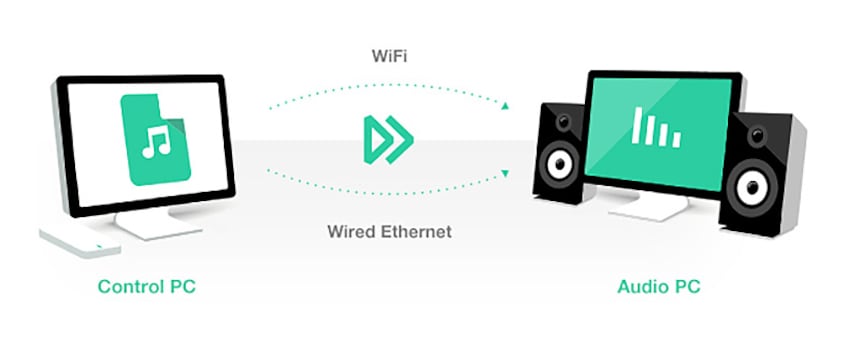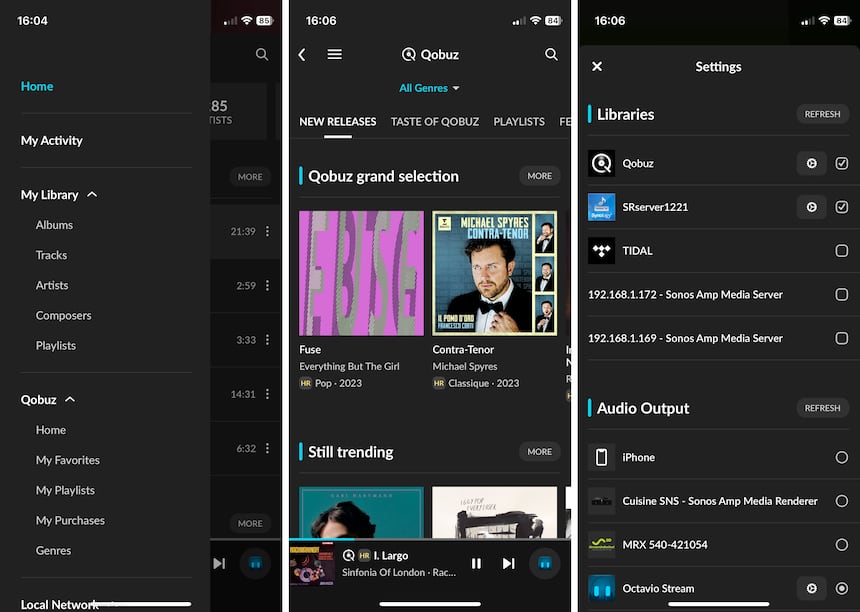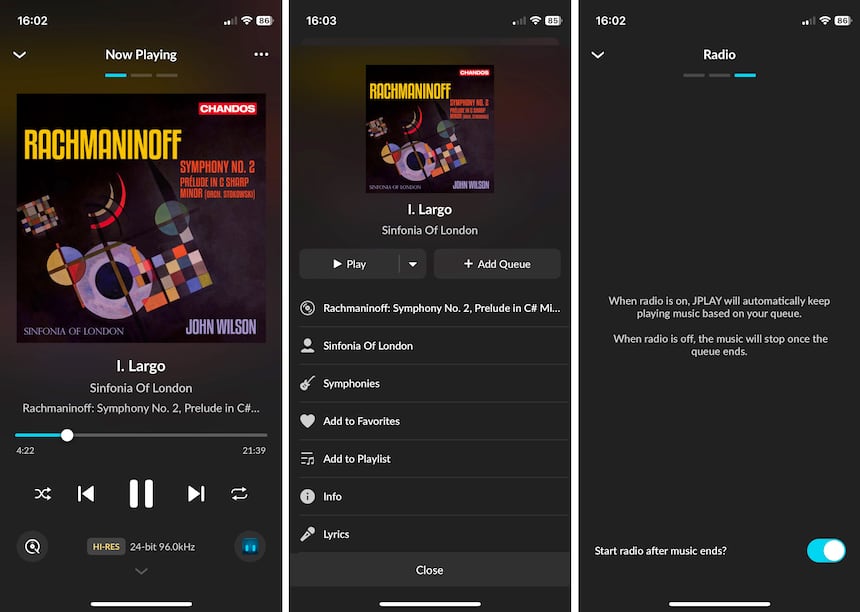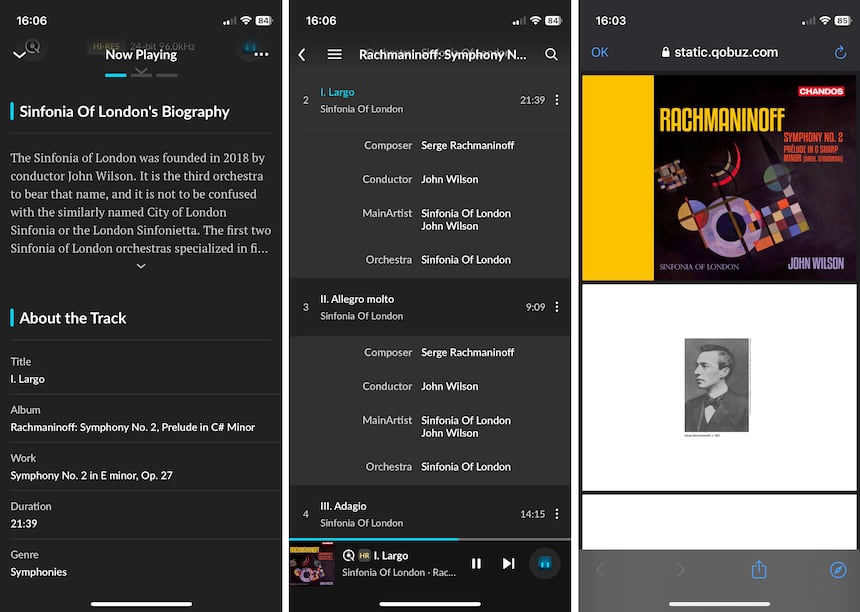How does independent playback software work?
JPLAY is a software suite for Windows designed to operationalise a library of Hi-Res files. It consists of several components, including a server (femtoServer) and a player (FEMTO). These two components can be installed on two different machines. The server is the heart and engine of the software; it’s the filing system where the files will be organised and made available for the player. The audio files themselves can be stored elsewhere, on a NAS server for example. But there’s nothing to stop you running everything on a single computer, which will then become your JPLAY player.
For some months now, there has been a mobile version for Apple. The JPLAY application for iPhone and iPad (and for Macs equipped with the latest M1 chip) acts as a remote control. On the one hand, there are the sources; Qobuz, fully integrated, being one such source (more on that later). Then there’s always access to your library of files, which must be in a shared space on the local network. This could simply be a folder on a NAS or the JPLAY femtoServer application installed on a PC.

On the other side of things, there’s the player. Here again, the JPLAY FEMTO playback software on a PC acts as the playback point. But the application goes further by recognising a number of streamers. JPLAY found an Octavio player, Sonos players, an Anthem home cinema amplifier and an Onkyo mini-system on our network. To find them, JPLAY uses the UPnP protocol.
In short, the JPLAY application lets you select music and send it to the network player of your choice. It centralises both Qobuz and your personal library in a unified interface with your playlists and favourites in both worlds.
Discover the JPLAY application
JPLAY shares many similarities with two other applications well-known to audiophiles; namely Roon and Audirvana. There’s one difference: the installation of permanently running software is optional with JPLAY, whereas it is compulsory with its competitors. On the other hand, Roon and Audirvana have sound processing and transcoding settings that the JPLAY mobile application for iOS does not.
The application’s home page is slightly inspired by Roon. At the top, it shows the number of albums and tracks in your collection, combining your personal library and your Qobuz favourites. This is followed by a list of the latest tracks listened to, Qobuz recommendations, your favourites and the latest additions to your collection.

At the top left, the little icon opens the side menu. Here you’ll find access to recent activity, access to the library via different entries and the overall Qobuz menu. At the top right, the magnifying glass takes you to the search page. To the right of the field, you can select to search your library and Qobuz simultaneously, or just one of them. The results are displayed immediately, as the application stores all your library’s metadata. Many proprietary applications for controlling streamers do not have this capability.
Qobuz Perfectly Integrated
The Qobuz menu takes you to a homepage that is typical of network playback apps. There are the usual sections for new releases and recommendations, with a filter by musical genre. The menu provides you direct access to your playlists, favourites and purchases. Quick alphabetical navigation is also possible at any time via a vertical bar on the right edge of the screen.
You can add or remove tracks from your personal Qobuz playlists. JPLAY also allows you to create new playlists, either directly on your Qobuz account, or linked solely to the application.

The playback screen displays the icon indicating the source - Qobuz in this case - the quality of the file and the icon for the selected player in the bottom right-hand corner. The three little dots at the top right give access to editorial content about the album, as well as to information about the artists, composers, producers, etc. These are active links for unlimited exploration of the music. If a booklet is available, for classical music for example, the link will appear in the menu and take you to the Qobuz site to consult it. You can also simply click on the cover to access the complete album from which the track is taken.

An Effective Playback Solution
In conclusion, the advantage of the JPLAY playback software is that it gives you more latitude than the other softwares of its kind in marrying Qobuz and your personal music library. The only thing missing is multi-room playback by combining devices from different brands, which would be great. As far as Qobuz integration is concerned, it borders on perfection. We’ve rarely seen this done so seamlessly. As for the promised superior audio quality, JPLAY claims to minimise network traffic to improve sound, but we couldn’t say for sure how this application is superior to its rivals or to those of the manufacturers. However, combining all your music in one fluid, comprehensive application with the ability to control several network players of different brands already fully justifies the investment of an annual subscription of around fifty euros, which is a lower cost than its competitors. One more advantage for JPLAY.